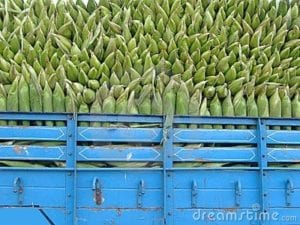In recent years, the Government of Tanzania like other governments in Sub Saharan Africa, has periodically banned the export of its staple crop (maize) in an attempt to ensure food security and protect its citizens from food price increases. By banning exports, these countries hope to prevent an outflow of their staple food crops that would reduce domestic supply and lead to increases in domestic food prices.
This has been a common response to domestic production shortfalls or to high prices in international markets. However, export bans not only have the potential to reduce producer prices locally but, because the bans are often ad hoc, can cause significant market uncertainty for private sector traders and ultimately make them less responsive to future opportunities for trade and investment.
Moreover, when export bans are effective and actually reduce trade together with domestic producer prices, they can have adverse effects in the importing country by restricting its supply leading to higher prices in the long run. Speaking recently in Dar es Salaam during a workshop on food security, the President and Chief Economist of Associates for International Resources And Development (AIRD), Dr Dirck Stryker said that export bans may not be effective in preventing exports from countries that have relatively open borders with neighbouring countries.
He said that if borders are porous, a commodity that is banned in official channels may be traded illegally through informal border crossing points and often at higher transaction costs. “To the extent that marketing costs through these channels are higher (due to poorer roads, longer distances) the price of the export good for the farmer will be lower than if the good was exported through official channels,” he said. He says that though cross border trade has a long history in Tanzania, the country has been a net maize exporter only in recent years.
However, even in the recent years, recorded formal exports in maize were not always more than imports. According to FAO data, between 2002 and 2009 there were only four years in which Tanzania was a net maize exporter, while in the other four years, the country actually was a net importer (these figures do not include informal sector trade, however.) Tanzania’s switch to a net maize exporter is largely due to rapid increases in its maize production, primarily due to expansion in maize area.
While the average level of maize yield in Tanzania is still far below that in Kenya, an indication for future growth through yield improvement, both yield and production growth rates have been higher in Tanzania than in Kenya (which is a net maize importer), an indication that Tanzania will increasingly become the key supplier of maize to Kenya’s market. Dr Dirck Stryker says further that given Tanzania’s advantage in location (with common border with Kenya), the maize exports could become an important income source and a significant driving force for overall economic growth and poverty reduction.
Tanzania has a unique opportunity to become the granary of eastern Africa due to its large expanse of productive agricultural land, its experience with growing crops such as rice and maize that are increasingly in demand in a region with generally limited land resources, and its market networks and traders with a sound knowledge of export opportunities. It’s potential to become a major exporter of food crops, especially maize and rice, to the East Africa region and the Horn of Africa results from its large and relatively underutilized natural resource base and the growing import demand of bordering and neighbouring countries.
Kenya is currently the largest importer in the region, with average maize imports of 530,000 tons during 2007- 2011, but rapid population and income growth and limited land for expanding crop production will cause imports to rise in other countries in the future. “While Tanzania has a transportation advantage for supplying the Kenyan and Horn of Africa markets, it will still need to compete with other exporters in the East Africa region, such as Uganda, and countries in Southern Africa such as Malawi, Zambia, Zimbabwe and South Africa.
It will also have to assure the food security of its population,” said Dr Stryker. In a case study conducted by Bernard Kagira titled “Tanzania Export Bans,” if Tanzania is to reach its export potential, it will need to focus on expanding production and pursuing policies that encourage exports rather than restricting exports, as has been the case in recent years. The report further stresses that this shift in policy will need to be driven by a better understanding of the cereals markets in Tanzania and the region.
According to the survey, a Concept Note has recently been prepared as a first step towards looking at the impact on producers, consumers, and the overall economy of maize export restrictions within a comprehensive framework. The International Food Policy Research (IFPRI) has made use of a Computable General Equilibrium (CGE) Model for Tanzania to estimate the impact of current policy and its alternatives on economic growth, poverty, and food security. The US Department of Agriculture (USDA) is assessing the food security needs of Tanzania and the capacity to meet these needs through a review of data quality and timeliness for monitoring food insecurity, management and use of the National Food Reserve Agency (NFRA) reserves to provide emergency food aid where needed, and the magnitude of emergency food aid required. To supplement these efforts, the NAFAKA project is providing assistance to analyze agricultural production, marketing, and trade in Tanzania and East Africa for the purpose of identifying the policy options that exist and evaluating which will be most effective in achieving the programme’s goals of food security and economic growth and poverty reduction through food exports. Source: http://allafrica.com







